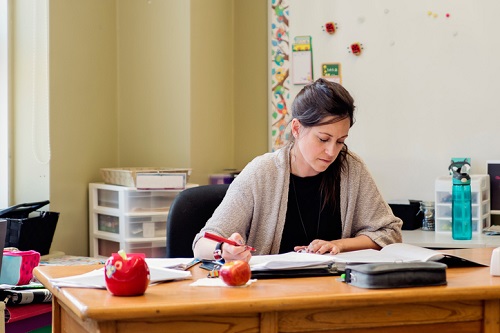
Studies have shown that improving students’ mental health can result in better academic performance.
As the end-of-year exams approach, schools are encouraged to take extra steps to ensure the mental wellbeing of their senior year students, a high number of whom have reported feeling overwhelmed in the lead up to this critical time of year.
For many principals and teachers, the stress and anxiety felt by students can contribute their own.
In an article published in The Conversation, Peta Stapleton, an associate professor in psychology at Bond University, said that out of 166 anonymously surveyed teachers aged 22-65, some 18% had symptoms of moderate to severe depression.
Even higher, almost 62% of the respondents also seemed to have symptoms of moderate to severe anxiety. Some 19.75% who took part in the survey had severe anxiety.
Associate Professor Stapleton noted the survey showed the rates of depression and anxiety among teachers are higher than national averages, as around 10% of Australians experience depression, while some 13% experience anxiety.
When asked what their top source of stress was, most respondents said their workload was the main factor.
Other contributors to mental health issues include stressful environments, the lack of available resources, the pressure of time and difficulties in dealing with students, parents and fellow staff.
Government intervention
Luckily, this issue has not gone unnoticed by those who are in a position to help.
In September, the Federal Government made promises to look into improving teachers’ welfare – ranging from cutting red tape to solving the issue of violence against educators.
The Victorian Government has announced it will inject $244.6m to ensure its educators have enough resources to improve the quality of teaching in their classrooms.
In Queensland, the state’s government recently opened a Centre for learning and Wellbeing as part of a $100m program to support educators and advance rural and remote education.
“We want to retain and attract quality teachers in regional Queensland, but we can’t do that without providing the right support and professional development,” QLD Education Minister Grace Grace said.
“This includes mentoring through face-to-face workshops and via technology. The Centres also offer links to support services so that our staff, students and families can access the assistance they need.”
The Centre will provide a venue for mentoring beginning teachers as well as guide experienced teachers and build resilience among school staff who are new to the area.
Some $31.1m has been injected into the sector in the past four years to establish Centres in Mount Isa, Roma, Atherton and Emerald.
The QLD Government spent over $600,000 to set up the newest Centre at Emerald North State School, Grace said.
The newly-opened Centre has been operating since July this year and is open to the communities of Emerald North State School, the Borilla Community Kindy, and Emerald State High School.


